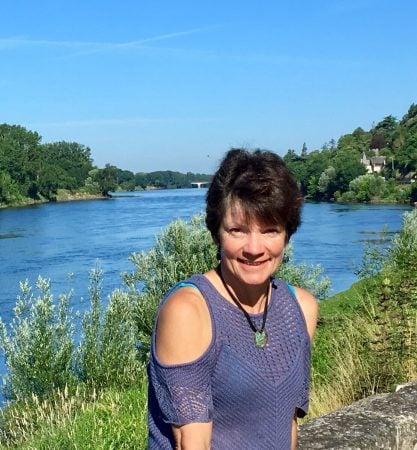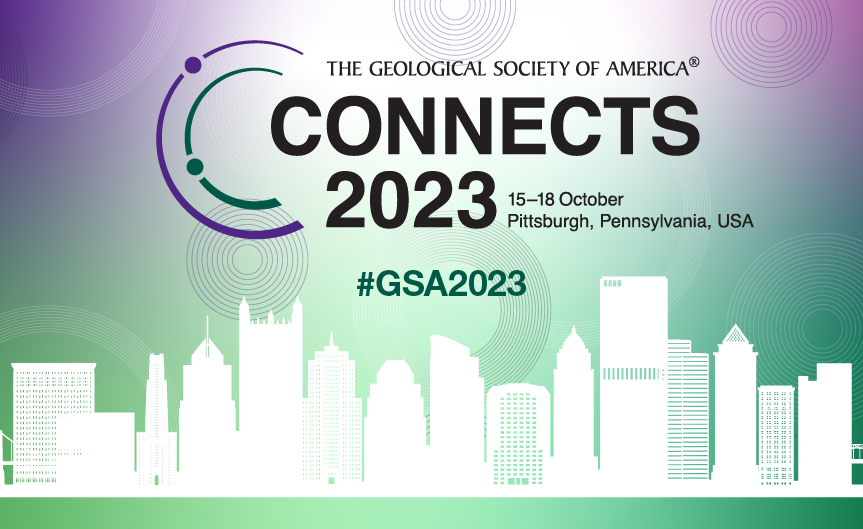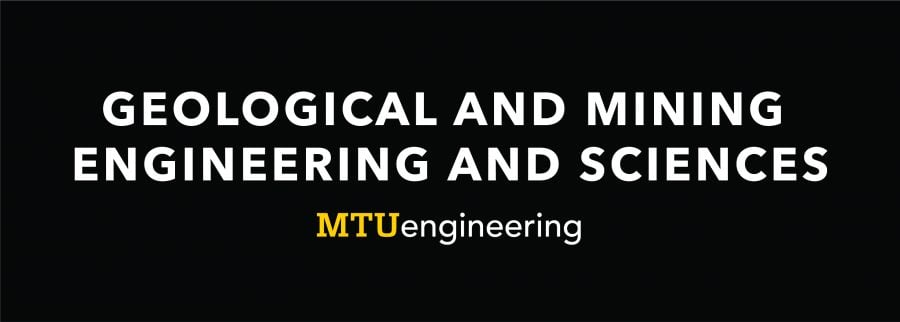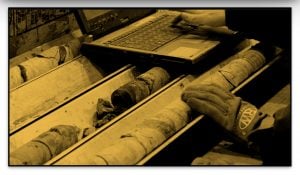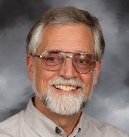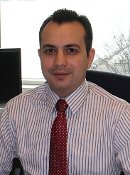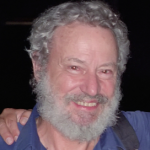Mary Herrmann-Foley, MBA, returns to campus as the EPSSI Seminar guest speaker on Monday, October 23, 2023, from 4 – 5 p.m. in M&M room U113. Mary completed her Bachelor’s Degree in Geological Engineering at Michigan Tech in 1983. She continued her education at the University of Houston, earning her master’s in business administration in international finance in 1985. Currently, she serves as Manager of Central Support PetroSigns SSW application at Shell. Last fall, Mary was inducted into the Academy of Geological and Mining Engineering and Sciences. We are excited to welcome her back to campus once again!
In her talk, Role of Subsurface Engineering and Geology in the Energy Transition World, she will discuss the essential role of subsurface engineering and geology in the changing world of energy transition.
From the abstract: The world is in the midst of the first “truly global energy crisis,” the International Energy Agency (IEA) said in its World Energy Outlook in October 2022. It’s multidimensional and comes with the challenge of global warming and the need to reduce/eliminate CO2 emissions. We are all experiencing the impact of rising CO2 in the atmosphere: ocean levels rising, more intense storms, and increasing temperatures with corresponding implications on us and the environment around us. Conflicting pressures linked to continued high-energy demand, the need for energy security, and the imperative for reducing CO2 emissions are driving unprecedented renewable energy growth. This presentation will touch on the challenges related to these conflicting pressures and how existing and start-up energy companies are addressing some of these challenges through numerous renewable energy and carbon sequestration options, mainly focusing on the crucial role subsurface engineering and geology can play in this journey. Highlights of Michigan’s current situation and related business opportunities will also be discussed.
All are welcome to attend.
Will you be in Pittsburgh for GSA Connects 2023? Please join us on Monday evening for the Michigan Colleges/Universities Joint Alumni reception (Albion, CMU, EMU, GVSU, Hope, Michigan Tech, WMU, and WSU). Enjoy snacks and a cash bar.
Monday, October 16, 2023
5:30 PM – 7:30 PM
Sky Room, 17th floor
Omni William Penn Hotel
Questions? Contact Aleksey Smirnov, GMES Chair. We hope to see you there!
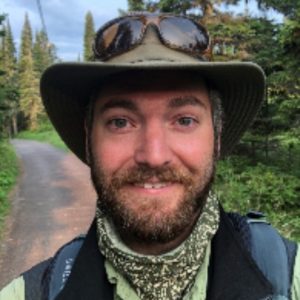
The Department of Geological and Mining Engineering Sciences (GMES) announced that master’s student Daniel J. Lizzadro-McPherson’s talk, “Remapping the Keweenaw Fault and Discovery of Related Structures in Michigan’s Historic Copper District,” was awarded the Best Graduate Oral Presentation from the Geological Society of America’s (GSA) 2020 North-Central Section Meeting, held online this past May 2020.
The talk was featured in the Unique Geology and Geoheritage of the Lake Superior Region Session led by Erika Vye (GLRC), William Rose (GMES), Jim Miller, and James DeGraff (GMES).
Lizzadro-McPherson presented on the history of mapping the Keweenaw Fault and the current remapping efforts aimed at understanding this complex fault system in northern Keweenaw County. For more information about this project or to receive a link to the virtual presentation please email djlizzad@mtu.edu.
Explore the eight presentations in the session by Michigan Tech researchers:
- REMAPPING THE KEWEENAW FAULT AND DISCOVERY OF RELATED STRUCTURES IN MICHIGAN’S HISTORIC COPPER DISTRICT
- ANALYSIS AND INTERPRETATION OF FOLDS AND FAULT SEGMENTS ALONG THE KEWEENAW FAULT SYSTEM, MICHIGAN
- KEWEENAW SHORELINES: SHALLOW WATER SCIENCE, HISTORY, EDUCATION AND GEO TOURISM + YouTube Video
- GEOHERITAGE AND THE ARTS: BUILDING AWARENESS USING THE KEWEENAW MINES + YouTube Video
- DIGITAL CAPTURE AND PRESERVATION OF HISTORIC MINING DATA FROM THE KEWEENAW COPPER DISTRICT, MICHIGAN
- TEACHING THE GEOLOGIC HERITAGE OF MINNESOTA’S NORTH SHORE AT THE NORTH HOUSE FOLK SCHOOL, GRAND MARAIS
- SHIPWRECK EXPLORATION WORKSHOP IN NEARSHORE KEWEENAW WATERS
- CONNECTING RESEARCH AND COMMUNITY – A KEWEENAW LAKE SUPERIOR NATIONAL MARINE SANCTUARY
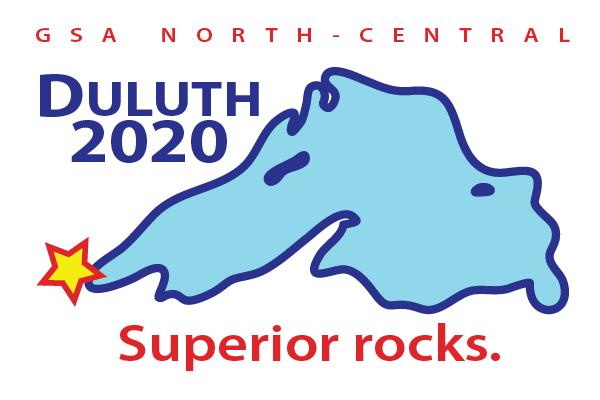
GeoSeminar: Tuesday, October 11, 2016 from 4-5pm in DOW 610
Jeffrey Lynott: Mineral Exploration and Ore Deposits for the Greate Lakes Region.
Jeff will discuss his participation and observations based on 30 years in and around the business of mineral exploration and development in his backyard. He has worked on the Crandon Project for Exxon and later for Nicolet Minerals and Crandon Mining Company. He was then with Noranda when Lynne was discovered and worked on Back Forty beginning in 2002 – when they had three geologists and five drill rigs turning. Those were the days!
For a complete list of all upcoming GeoSeminars for the 2016-17 academic year visit: http://www.geo.mtu.edu/~raman/SilverI/Geoseminar/Welcome.html
Hope to see you all there!
Ted Bornhorst, executive director and professor, A. E. Seaman Mineral Museum, attended and gave an invited presentation at the 6th annual Dallas mineral collecting symposium held Aug. 20, 2016. Bornhorst’s presentation was titled “Michigan’s Copper Country and the A. E. Seaman Mineral Museum.”
The full day symposium included a presentation by the Curator of the U. S. National Gem and Mineral Collection at the Smithsonian. One of the world’s foremost mineral dealers in fine mineral specimens, The Arkenstone, is the principal sponsor of the symposium. Robert Lavinsky, founder and owner of The Arkenstone, has donated several mineral specimens to the museum and played a role in another prominent donation.
Ebrahim Tarshizi, an assistant professor of mining engineering, has been nominated by the Society of Mining, Metallurgy and Exploration (SME) as a Henry Krumb Lecturer for the 2016-2017 series.
Tarshizi presentation for this year’s series is “Simulation and Animation of Marigold Mine with Dynamic Pit Operation.” SME Henry Krumb Lectures will be scheduled from October 2016 to May 2017.
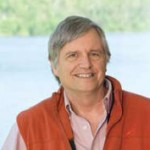 Bill Rose has started an effort to help get a local geoculture by doing a weekly department seminar. The idea is to have a partly technical and partly social event every friday from 3-4 (beginning Sept 4) with refreshments 4-5 pm.
Bill Rose has started an effort to help get a local geoculture by doing a weekly department seminar. The idea is to have a partly technical and partly social event every friday from 3-4 (beginning Sept 4) with refreshments 4-5 pm.
Speakers from the department and other parts of the university and beyond have been scheduled. All of these people want to communicate with our geocommunity. They all can help us by being part of our support group for teaching, research, outreach and learning in general. These are mostly people that we don’t see every day, but who know about the Earth, Earth Science, Geology, Geological Engineering, Geophysics and Mining. The seminars will be done to inform all of us about our geocommunity, its elements and opportunities.
You may realize that Michigan Tech is a geouniversity, created because of its fortunate geology. Many people are here, whether they realize it our not, because of Earth’s gifts here and our geoheritage. You, as a member of the geocommunity have advantages and benefits that you may not know about.
Among the main things that you could get out of participation in this seminar series are:
1. Being able to write a better proposal, that explains its relevance more broadly, something that could help you get funding.
2. You might be able to identify outside examiners for your MS or PhD research.
3. You might learn about a part of geoscience or engineering that could help you do better work, or understand things better.
4. You might improve at explaining your future to your grandmother.
5. It will be fun and interesting.
We hope you will want to come every friday! 3-5pm
See the Website http://www.geo.mtu.edu/~raman/SilverI/Geoseminar/Welcome.html
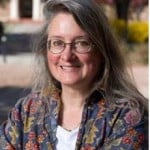 Geological and Mining Engineering Department Lecture:
Geological and Mining Engineering Department Lecture:
Dr. Wendy Calvin, Professor of Geophysics & Remote Sensing
Director, Great Basin Center for Geothermal Energy, University of Nevada – Reno
“Using Mineral Spectroscopy for Geothermal Exploration”
Friday – February 13 at 4:00 p.m., 642 Dow Environmental Sciences Bldg.
Visiting Women & Minority Lecturer/Scholar Series funded by: A grant to the Office of Institutional Equity from the State of Michigan’s King-Chavez-Parks Initiative, the EPSSI and Geological and Mining Engineering Departments of Michigan Tech University; Reception to follow in the Dow 6th floor Lakeside Atrium
The Earth, Planetary, and Space Sciences Institute
proudly presents:
Ezequiel Medici, MTU ME-EM Research Engineer
The EPSSI seminar for Monday, December 1, 4:00 p.m., M&M U113
“Shock Tube Recreations of Shock Waves and Jets Generated During Explosive Volcanic Eruptions”
Abstract: At the beginning of a suddenly explosive volcanic eruptions two types of phenomena can be observed, the formation of a shock wave immediately followed by a supersonic jet of expanding vapor-solid-liquid mixture. The intensity of the shock wave and the structure of the supersonic jet can carry a significant amount of information about the intensity and the dynamics of the volcanic eruption. Despite the hazard they represent to the immediate surrounding area of the volcano vent, these atmospheric shock waves and the subsequent sonic wave can be safely measured at a long distance from the vent. This characteristic makes the measurement of shock/sonic waves suitable for safe, real-time remote sensing of the conditions at the volcanic vent during the eruption. Preliminary results, based on the experiment performed on the shock tube, indicate a strong correlation between the energy released by the eruption, calculated by standard methods post eruption, and the intensity of the shock wave as measured through its pressure field. This correlation could ultimately lead to a more reliable model of shock/sound wave propagation which will serve as an early warning system for the air traffic control.
Immediately after the shock wave, an over pressurized jet mixture of vapor, solid particles, and liquid begins to expand. This mixture typically contains a relatively high concentration of solid particles of different size. To study the coupled interaction between the expanding gas and the particles, a series of analog explosive volcanic experiments using the atmospheric shock tube were performed. High-speed shadowgraph imaging of the expanding jet mixtures is recorded for different initial jet energy, particle sizes and particle concentrations. The study and observations of the interaction between the mixture of expanding gas and particles can elucidate the mechanisms acting during the initial stage of the formation of ash plumes or pyroclastic flows.
